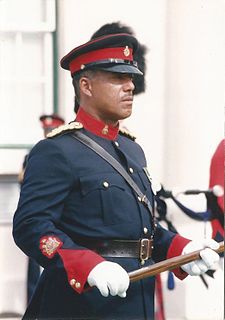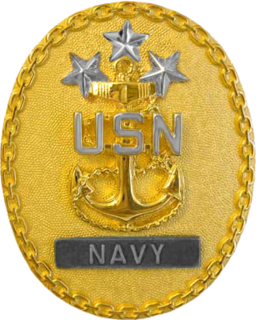This article does not cite any sources .(November 2011) (Learn how and when to remove this template message) |
A Fitness Report (FITREP) is an evaluation form used by the United States Navy and United States Marine Corps. Navy officers are given Fitness Reports, while Navy chief petty officers (E-7 to E-9) are given "Chief EVALs" and Navy sailors E-6 and below are issued Evaluation Reports (EVALs). Marine enlisted from the rank of sergeant (E-5) to sergeant major/ master gunnery sergeant (E-9) and officers are given Fitness Reports, while junior Marines are given Proficiency and Conduct marks ("Pros/Cons").
A performance appraisal, also referred to as a performance review, performance evaluation, (career) development discussion, or employee appraisal is a method by which the job performance of an employee is documented and evaluated. Performance appraisals are a part of career development and consist of regular reviews of employee performance within organizations.

The United States Navy (USN) is the naval warfare service branch of the United States Armed Forces and one of the seven uniformed services of the United States. It is the largest and most capable navy in the world and it has been estimated that in terms of tonnage of its active battle fleet alone, it is larger than the next 13 navies combined, which includes 11 U.S. allies or partner nations. with the highest combined battle fleet tonnage and the world's largest aircraft carrier fleet, with eleven in service, and two new carriers under construction. With 319,421 personnel on active duty and 99,616 in the Ready Reserve, the Navy is the third largest of the service branches. It has 282 deployable combat vessels and more than 3,700 operational aircraft as of March 2018, making it the second-largest air force in the world, after the United States Air Force.

The United States Marine Corps (USMC), also referred to as the United States Marines or U.S. Marines, is a branch of the United States Armed Forces responsible for conducting expeditionary and amphibious operations with the United States Navy as well as the Army and Air Force. The U.S. Marine Corps is one of the four armed service branches in the U.S. Department of Defense (DoD) and one of the seven uniformed services of the United States.
The United States Air Force equivalents are the Enlisted Performance Report (EPR) and Officer Performance Report. The United States Army equivalents are the Enlisted Evaluation Report (EER) and Officer Evaluation Report. The Navy uses the same format for senior enlisted as officers because of the special role that chief petty officers play in the Navy. Similarly chief petty officers also wear the same uniforms, with appropriate rank insignia, as officers.

The United States Air Force (USAF) is the aerial and space warfare service branch of the United States Armed Forces. It is one of the five branches of the United States Armed Forces, and one of the seven American uniformed services. Initially formed as a part of the United States Army on 1 August 1907, the USAF was established as a separate branch of the U.S. Armed Forces on 18 September 1947 with the passing of the National Security Act of 1947. It is the youngest branch of the U.S. Armed Forces, and the fourth in order of precedence. The USAF is the largest and most technologically advanced air force in the world. The Air Force articulates its core missions as air and space superiority, global integrated intelligence, surveillance, and reconnaissance, rapid global mobility, global strike, and command and control.
An Enlisted Performance Report (EPR) is an evaluation form used by the United States Air Force. Instructions for constructing an EPR appear in chapter 3 of Air Force Instruction 36-2406: Officer and Enlisted Evaluation Systems. The EPR replaced the Airman Performance Report (APR) in the late 1980s.

The United States Army (USA) is the land warfare service branch of the United States Armed Forces. It is one of the seven uniformed services of the United States, and is designated as the Army of the United States in the United States Constitution. As the oldest and most senior branch of the U.S. military in order of precedence, the modern U.S. Army has its roots in the Continental Army, which was formed to fight the American Revolutionary War (1775–1783)—before the United States of America was established as a country. After the Revolutionary War, the Congress of the Confederation created the United States Army on 3 June 1784 to replace the disbanded Continental Army. The United States Army considers itself descended from the Continental Army, and dates its institutional inception from the origin of that armed force in 1775.








